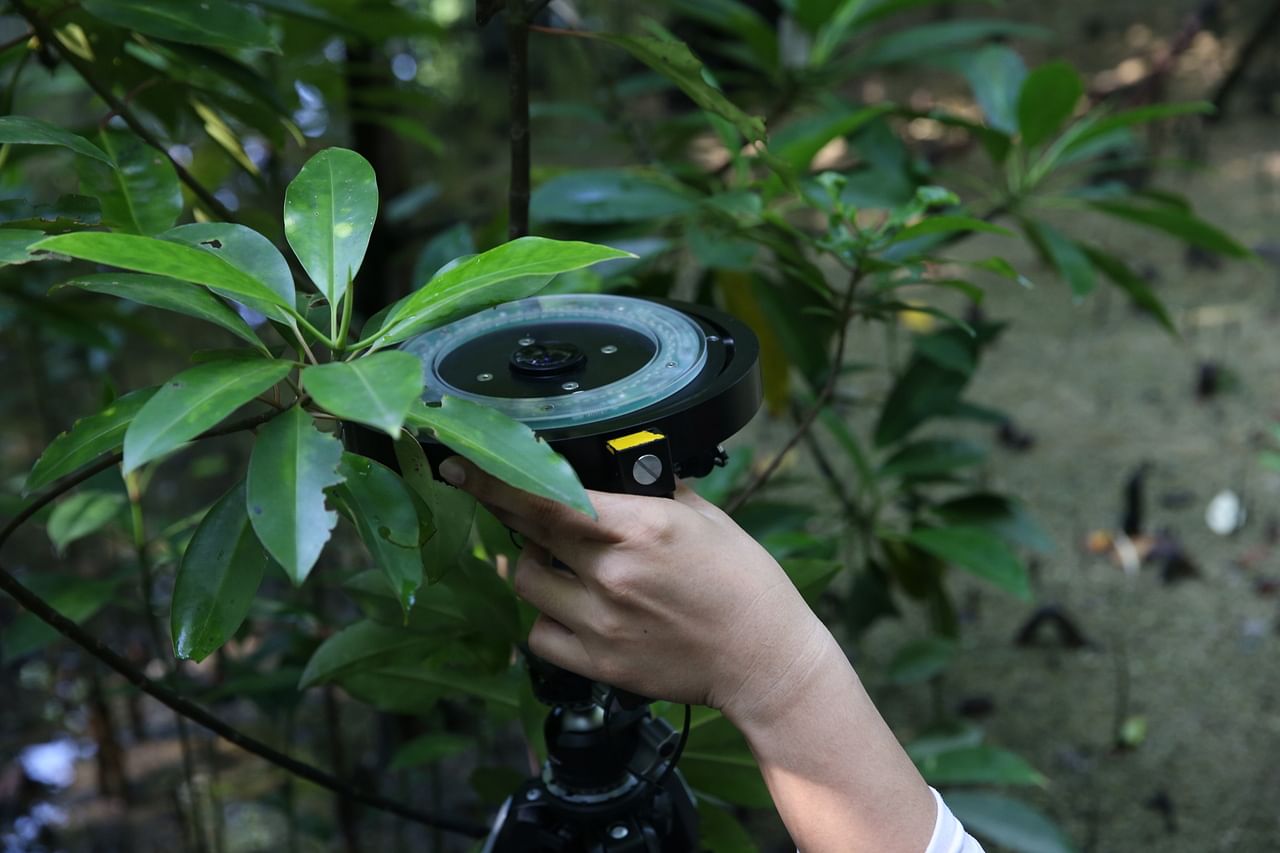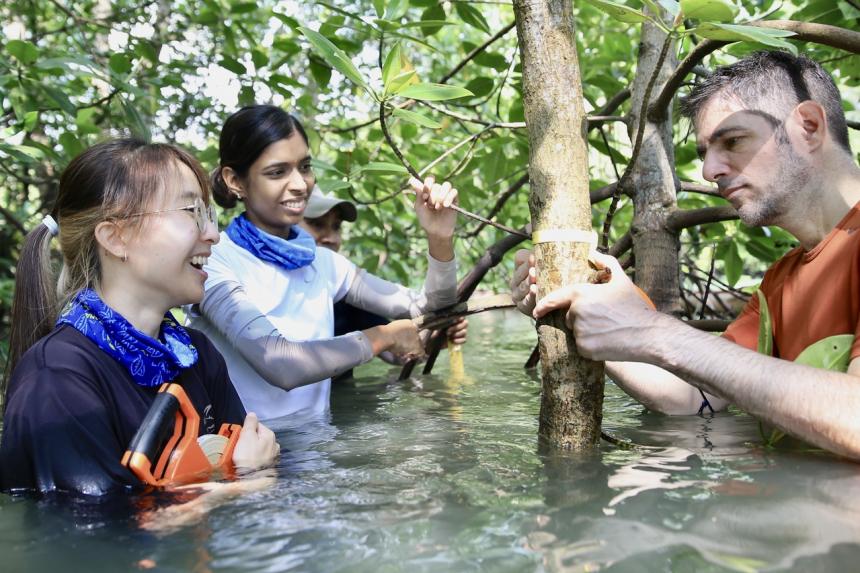SINGAPORE - Mangroves are coastal sentinels that can protect an area from sea-level rise, but only a small proportion of seedlings transplanted into an area survive.
The findings of new research led by Yale-NUS College scientists, however, could help increase the success rate of such transplants.
On March 31, the team led by Associate Professor Michiel van Breugel and Professor Taylor Sloey, who has since left the college, published in the journal Restoration Ecology the results of a study about the different factors that can affect mangrove seedling survival.
By monitoring the environmental conditions of more than 900 naturally established mangrove seedlings in Pulau Ubin, the team found that light is the strongest factor that predicts the seedlings' survival after they have been established.
A seedling is deemed established when it can produce new growths, like new leaves.
Prof van Breugel said: "In many mangrove studies, hydrology is often thought to be the major limiting variable to seedling survival."
The hydrology of the area describes the level, frequency, duration and type of flooding in an area, among other things.
He said: "This makes sense because mangroves live in areas that are frequently flooded by seawater at high tide."
During high tide, the roots of these mangrove seedlings are starved of oxygen. While experiencing oxygen starvation, the seedlings also have the additional work of expelling salt from their bodies.
This is an energy-taxing process for the seedlings, which can cause them to die, Prof van Breugel said.
Under these harsh conditions, less than 50 per cent of all naturally established seedlings surveyed by the team survived after six months.
After another six months, only less than 20 per cent of them were left standing.
However, the team found that the surviving seedlings enjoyed a higher median level of sunshine than the ones that had perished.
Prof van Breugel said: "A lot of light is required to maintain all the physiological machinery inside their roots to survive under such stressful conditions."

This light could have then been used for photosynthesis, the biological process in plants that allows them to convert sunlight into energy.
But this is contingent on whether they can keep their leaves above water.
Prof van Breugel said: "What we're learning is there are different environmental factors that are more important at different mangrove life stages."
While hydrology may have been more important in the beginning phases of seedling growth, sunlight may become more important later, he said.
Prof van Breugel added: "It is therefore important to have a responsive and adaptive approach to mangrove restoration efforts."
Many mangrove restoration efforts fail globally.

After the Indian Ocean tsunami wrecked the coasts of Sri Lanka in 2004, a mangrove restoration effort was initiated by the international community to restore its shores.
However, a paper published in Restoration Ecology in 2017 found that almost no seedlings survived in most of the attempted plots of mangrove restoration.
This failure was mostly caused by planting the seedlings in locations inappropriate for their growth.
Prof van Breugel said: "With our study, we hope that we'll be able to direct restorers towards planting these mangrove seedlings in places that they are more likely to survive."
The Yale-NUS team will continue to deepen its research on seedling survival in different conditions.
Under the Long-Term Urban Mangrove Protection, Understanding and Rehabilitation project, the team has covered more than 10,000 sq m of forest, and plans to cover more.


